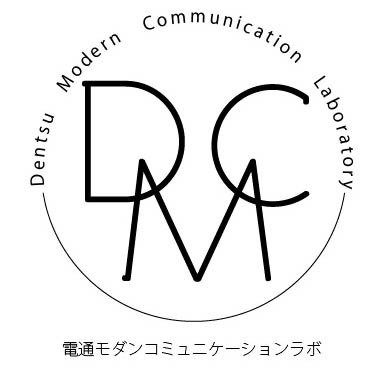After reading it, I suddenly recalled words my supervisor said on my first day in sales after joining Dentsu Inc.: "Honda, if I had to sum up sales work in one phrase, it's building fans. Creating fans for Honda both inside and outside the company—that's what it all boils down to."
Is the Latest Form of Satonao Theory "Regular Customer Initiatives"?
This time, I'd like to introduce the new book by Mr. Sato Naoyuki, known as "Satonao," titled "Fanbase: How to Gain Support, Be Loved, and Achieve Long-Term Sales Success" (Chikuma Shinsho/2018).
Many of you likely know Mr. Sato as a communication director whose writings have consistently challenged the advertising industry, and by extension, Japan's marketing world.
In 'Tomorrow's Advertising' (ASCII Shinsho/2008), he early predicted the limitations of communication planning overly reliant on mass advertising. In 'Tomorrow's Communication' (ASCII Shinsho/2011), he defined what communication design should be in the social media era. In *Tomorrow's Planning* (Kodansha Gendai Shinsho/2015), he advocated a planning methodology that distinguishes between fan-based and mass-based approaches. Mr. Sato has consistently updated his theories in step with the times and societal changes.
The title of his latest work is simply 'Fanbase'. While this book focuses specifically on the concept of "fanbase" introduced in his previous work, detailing its introduction, strengthening, and concrete implementation strategies, merely flipping through the table of contents without reading it might lead one to mistakenly think, "Regular customer strategies now?" However, this book thoroughly focuses on the present era, explaining why this concept is necessary now and how to practically implement it today. It provides concrete examples alongside practical explanations for introducing measures, elevating the vague, experiential knowledge of "regular customer strategies" into the "Fanbase" methodology.

Fans = People who support "value"
Within the "fanbase" concept, the point I personally found most crucial is defining fans as people who support "value."
This book defines a fan as "someone who supports the 'value' cherished by a company, brand, or product." (P8)
It's not the product itself they support, but the "values" the product cherishes. For example, with running shoes, fans are defined as people who support not the shoes themselves, but the solutions and value that running shoe manufacturer provides for the challenges of running.
Once you fully grasp this definition, it becomes clear that a "fanbase" is not merely a repeat customer strategy for existing customers, like upselling or cross-selling.
A common misconception is equating "cherishing existing fans" with "maintaining the brand or product's 'current value' alongside fans who uphold it." While fans certainly become fans because they like the brand's "current value," and there are aspects they want to remain unchanged, they also strongly anticipate an even better "future value" extending from that current value. They want to dream about this future together with the company. (P37,38)
Approaches to Strengthen Fan Support: "Empathy," "Attachment," and "Trust"
Chapter 3 thoroughly introduces concrete methodologies for actually implementing "fanbase initiatives" – approaches you can start tackling tomorrow.
I'd like to highlight three fundamental approaches for strengthening fan support—the cornerstone of "fanbase initiatives" that gradually increase LTV (Lifetime Value) by solidifying the backing of a core group of fans.
Three Approaches to Strengthen Fan Support
1) Strengthen "Empathy"
・Listen attentively to fans' words and focus on them
・Help them feel confident in being a fan
・Delight fans. Prioritize them over new customers
2) Strengthen "Attachment"
・Infuse products with stories and drama
・Value and improve touchpoints with fans
・Increase opportunities for fan participation and energize them
3) Strengthen "Trust"
・Ask yourself: Is this approach sincere?
・Show every detail of your core business and introduce it meticulously
・Value employee trust to make them your "strongest fans"
(Partially modified from Figure 19 on p. 99)
This book explains not only concepts like the above but also details such as how to conduct fan meetings for active listening.
The "Fan Base" Concept for Sales Professionals
While I strongly recommend this book not only to advertising professionals but also to salespeople, I imagine sales professionals might sometimes wonder how to translate this approach into revenue. However, in such moments, recalling the "Pareto Principle" – that the top 20% of customers generate 80% of sales – helps you realize how crucial fans are, even from a "revenue" perspective.
Furthermore, as highlighted in the book, many companies have recognized the importance of fans for years and taken concrete action. Examples include Mazda co-creating the "Atenza" with just five passionate fans, and Calbee spending a year developing a new "Jagariko" flavor through its fan community site.
We salespeople in advertising agencies, who don't have standardized products to sell, have always thought our job was "creating business" = "creating products to sell." But perhaps we now need to consciously change how we "create business" itself. No matter what business or communication plan we're considering, we should first place the "fanbase" at the center of our thinking.
Doing so allows planning to proceed without losing sight of the valued "value" that earns support, ensuring the resulting ideas and initiatives remain consistent and focused.
And I realized that the very hints for sales professionals to put this into practice in their daily work are found within this book.
The fundamental approaches of "empathy," "attachment," and "trust" – the basis of fanbase strategies. Replace "fans" with "clients" when reading about these, and you'll find they are the ultimate golden rules to practice in your daily client communications to transform how you build your business! (...There's still so much more I can do...! Sweat)
Enjoying the "fanbase" ideal
On the other hand, a cynical person like me had this lingering, uneasy feeling somewhere deep down: "Still, in the real business world, it might just feel like empty talk..." But the book's concluding section provided the perfect answer to that very concern.
When your boss asks about performance impact or you're realistically facing daily numbers, days come when a fanbase feels like nothing but pretty words, leaving you feeling empty (even though it actually directly impacts sales).
But I'll say it anyway, even if it sounds idealistic: I believe you're being tested on what truly matters to you in life. Why did you join this company? Why do you work? Why do you sell this product to consumers?
(Omitted)
Let's embrace the idealism. I think life without idealism is no life at all.
(P269)
Mr. Sato says, "Let's make the people we want to reach smile." A world where things, experiences, and people you truly love connect through smiles. I want to work to expand that world, even just a millimeter. Isn't that exactly the strong feeling I had when I first knocked on the door of the advertising industry at 23? I decided to return to that original spirit, embrace both reality and idealism, and fully enjoy my work at "Fanbase" – sales = business production.







